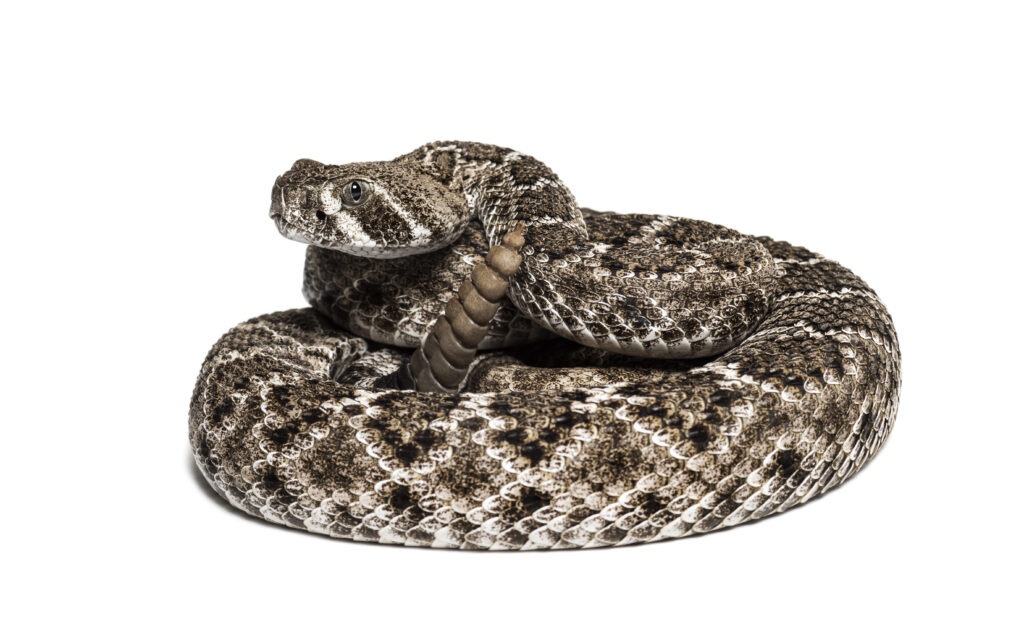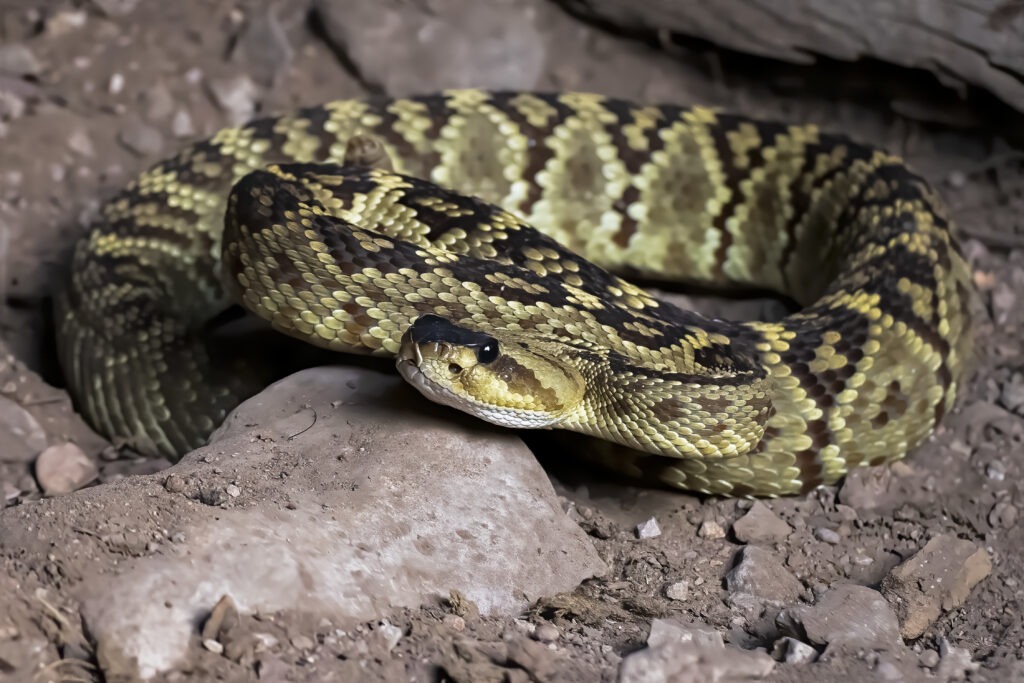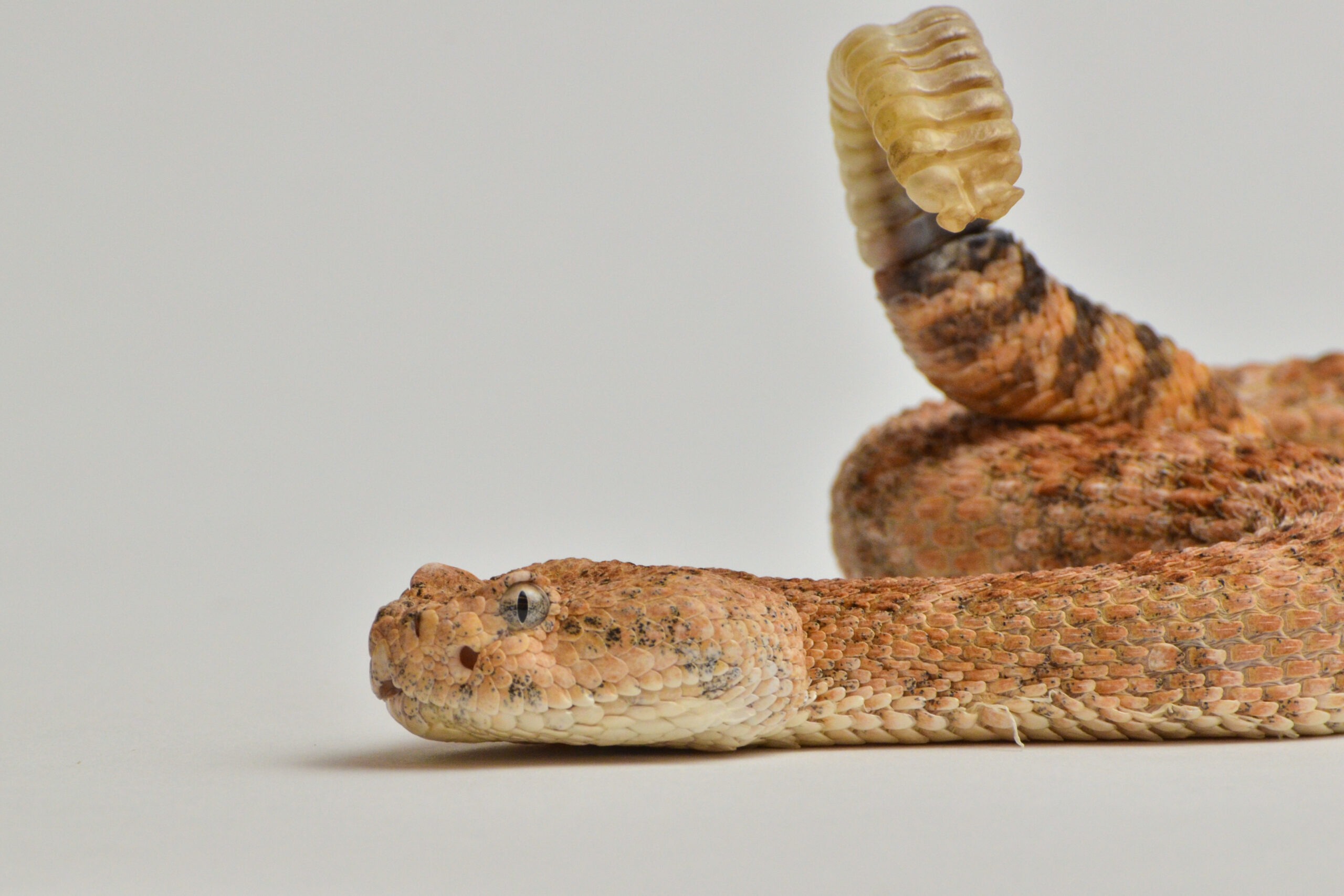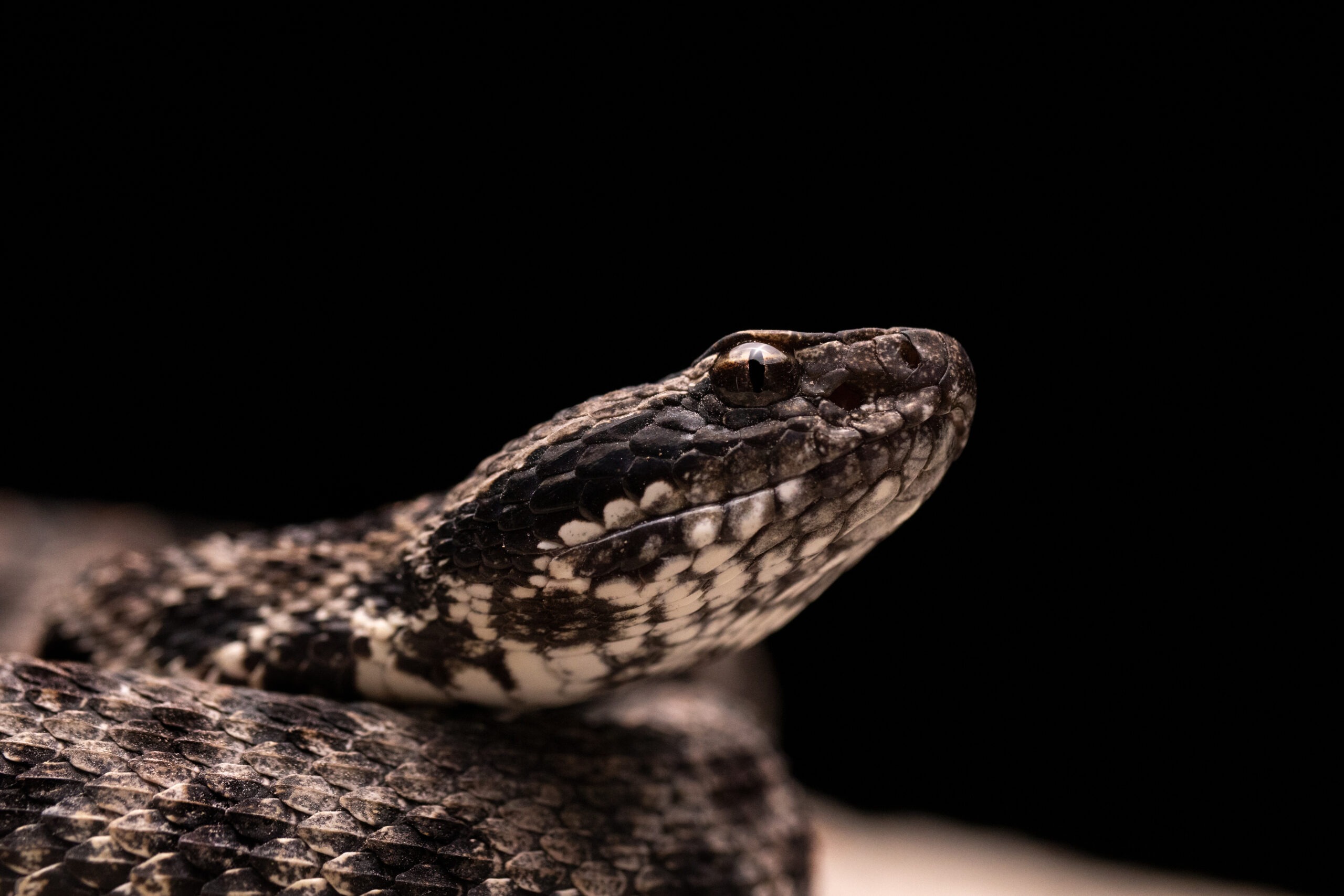
Some rattlesnakes can live up to 25 years. But there are a lot of different types of rattlesnakes and many different kinds of places with different predators. So how long do rattlesnakes live?
Here’s what I’ve noticed living in 3 different states where rattlers live:
The average lifespan of a rattlesnake is nineteen years. While rattlesnakes can have a lifespan of as short as ten years or as long as twenty-five years, most live for at least nineteen. Rattlesnakes live longer in captivity, with their lifespan decreasing by about four years in the wild.
Certain rattlesnakes live much longer than others.
For instance, the speckled rattlesnake has a lifespan of ten to fifteen years, while the Mojave rattlesnake has a lifespan of twenty-four years. In some instances, some rarer types of rattlesnakes do not have a known lifespan, such as the Golden Lancehead.
Because certain rattlesnakes do not have a known lifespan, it can be difficult to determine the actual average length of time.
Keep reading below to find out how long each kind of rattlesnake lives. In a few instances, I’ve also included a few other common snakes in the pit viper family that are not technically rattlesnakes.
Timber Rattlesnake Lifespan
The Timber rattlesnake has a lifespan of over twenty years. Timber rattlesnakes are also known as black rattlesnakes, eastern rattlesnakes, and Canebreaks.
This snake species lives in northeastern states where there are plenty of forests for them to live in. They used to also be found in Canada, however, they are now extinct there. In addition, they are currently an endangered species in Ohio.
Despite the snake being extinct and endangered in certain areas, they are not close to being an endangered species as a whole. There is an abundant amount of timber rattlesnakes in Texas, Iowa, Pennsylvania, and other states.
Prairie Rattlesnake Lifespan
The prairie rattlesnake has a lifespan of sixteen to twenty years.
They can grow up to five feet long, however, they are typically about three feet in length and weigh almost a pound. Prairie rattlesnakes prefer rocky areas or forests where there is an ample amount of prey. They live in a wide range of elevations, ranging from 100-2,700 meters.
Prairie rattlesnakes have the largest range in the United States.
Below is a list of where prairie rattlesnakes are found, proving how large of a range they have:
- Eastern Oregon
- Southern Idaho
- Western Iowa
- Eastern Arizona
- Canada
- Montana
- Eastern Washington
- North Dakota
- South Dakota
- Mexico
- Texas
- Nebraska
- Wyoming
- Colorado
- New Mexico
Source
Massasauga Rattlesnake Lifespan
The massasauga rattlesnake has a lifespan of 15 – 20 years. Massasaugas can cause grave harm to someone who is bitten, as their bite is extremely venomous. However, the likelihood of being bitten by this snake is extremely rare as they tend to avoid people. Unless they feel threatened, this snake will not seek out people to bite.
Below is a list of the three types of massasauga rattlesnakes:
- Western massasauga
- Eastern massasauga
- Desert massasauga
Although the species, in general, is not endangered, it is in the states of New York, Pennsylvania, Ohio, Missouri, Indiana, and Wisconsin. In the summer, massasaugas live in drylands, such as fields or prairies. During other seasons, they live in wetlands.
Mojave Rattlesnake Lifespan
The Mojave rattlesnake has a lifespan of twenty-four years. As can be expected from the name, this snake is most commonly found in the Mojave Desert in California. They are also found in Nevada, New Mexico, Texas, Arizona, and central Mexico.
Mojave rattlesnakes are one of the most venomous snakes in the world. Despite their small size, which is about three feet, they are extremely dangerous. If they feel like they are in danger, they will strike. Although they are not innately aggressive, they will protect themselves if they need to. Don’t be fooled by their small size—these snakes pack a punch!
Western Diamondback Lifespan

The western diamondback rattlesnake has a lifespan of fifteen to twenty years.
Unlike other rattlesnakes, they can be found in all climates, however, they are most common throughout Arkansas, Arizona, southern California, Texas, northern Mexico, and New Mexico. The rattlesnake lives from below sea level up to 7,000 feet in elevation.
The average Western Diamondback is about five feet long, however, it is the largest southwestern rattlesnake as it can reach up to seven feet in length.
Cottonmouth Lifespan
The cottonmouth snake has a lifespan of about twenty years. Cottonmouths are about three feet in length.
To be fair, a cottonmouth, sometimes called a water moccasin, is not technically a rattlesnake and it has no rattle. However, it is in the same family as rattlesnakes which collectively get called pit vipers.
Copperheads are part of that family also.
The cottonmouth snake is the only semiaquatic viper in the world. Unsurprisingly, they are found near water sources such as ponds or swamps. Beware of cottonmouths biting from beneath the water. Although they are capable of biting from under the water and are highly venomous, their bites are not typically fatal for humans.
When bitten by a cottonmouth, the most dangerous part is the possible development of compartment syndrome. Compartment syndrome occurs from excess pressure and internal bleeding.
Pygmy Rattlesnake Lifespan
Pygmy rattlesnakes have a lifespan of over twenty years. They are rather small and do not typically reach even two feet long.
Pygmy rattlesnakes have rattles, just like all rattlesnakes but they are small and brittle and are frequently broken or missing entirely. Their bite is not as venomous as some of their other rattlesnake counterparts. These bites are dangerous to children but not so much for adults. They also do not seek to bite, rather they only do so when they’re provoked.
These snakes are oftentimes found near water sources, however, they are found in a wide variety of areas.
“Pygmy rattlesnakes can be found in a variety of habitats including pine and scrub oak sandhills, scrub pine woods, mixed forests of pine and hardwoods, longleaf pine-wiregrass forests, swamps, and even xeric uplands.”
Sidewinder Rattlesnake Lifespan
The sidewinder rattlesnake has a lifespan of over twenty years.
Sidewinders try their best to avoid humans and will not bite unless they are given a reason to. Sidewinders are not only the quickest of all rattlesnakes, but they may be one of the fastest snakes in the world, reaching speeds of 18 mph. Their locomotion is where they derive their name from, and it allows them to quickly move across the sand.
This is extremely useful as they are found in deserts, specifically the Mojave Desert and the Sonoran Desert.
Their locomotion is to protect them from the heat of the sand. The rattlesnakes move in this unique style so that only two points of their body are touching the ground. If it were not for the way they moved, they would likely overheat from the temperature of the sand.
Although sidewinders are venomous, their bite does not usually lead to death. Still seek medical attention if bitten by one, but know that sidewinder rattlesnakes are not typically deadly.
Black-Tailed Rattlesnake Lifespan

The black-tailed rattlesnake has a lifespan of fifteen to twenty years. They vary from three to four feet in length. They can even weigh up to twenty-four pounds.
Black-tailed rattlesnakes are most commonly found in Texas and Arizona. These rattlesnakes are among the least dangerous rattlesnakes. Even when threatened, they do not typically bite. Black-tailed rattlesnakes are shy and will avoid confrontation at all costs. Unless faced with immediate danger, they will do their best to avoid having to protect themselves. However, if you are bitten, seek immediate medical care. The toxicity of their bite is moderate, and their bite should not be taken lightly.
Tiger Rattlesnake Lifespan
Tiger rattlesnakes have a lifespan of twenty to twenty-five years. Tiger rattlesnakes oftentimes do not reach two feet in length, and when they do, they rarely go over this estimate.
The tiger rattlesnake is most commonly found in Arizona and Mexico. They typically live in areas of high elevation, ranging from 1,000-5,000 feet.
Regarding their venom, it is the 2nd most dangerous of all rattlesnakes, second to Mojave rattlesnakes. Fortunately, their small heads and tiny fangs prevent large doses of venom from being injected. Still, if bitten by one of these rattlesnakes, seek medical attention right away.
It should be assumed that their bite is life-threatening.
Speckled Rattlesnake Lifespan

The speckled rattlesnake has a lifespan of ten to fifteen years.
They grow to an average of three feet and sometimes as long as four feet. These rattlesnakes are found in areas of Arizona, California, Mexico, and Nevada. They are found in areas of high elevation, ranging from 1,000-7,000 feet. They enjoy rocky areas and are usually found in deserts.
The venom of a speckled rattlesnake is of moderate toxicity but can be dangerous because of their size. Seek immediate medical attention if bitten by one.
Arizona Black Rattlesnake Lifespan
The average lifespan of an Arizona black rattlesnake is twelve and a half years.
However, there have not been many studies to determine exactly how long they live. Crotalus Cerberus rattlesnakes are commonly known as Arizona black rattlesnakes. As their name suggests, these rattlesnakes are dark in color, however, they can also be grey or brown. These rattlesnakes are rare and they are not commonly found.
When they are found, they are typically in elevations of 1,000-3,000 feet.
These snakes are not aggressive and compared to other rattlesnakes, are fairly calm. They do not seek to harm humans and will only strike when necessary.
Although their venom is mildly toxic compared to some other rattlesnakes, it can still be very dangerous. If bitten by one, immediate medical attention is highly advised.

Copperhead Lifespan
The copperhead rattlesnake has an average lifespan of about 18 years. Like the cottonmouth I mentioned above, this snake, while also a pit viper, is not technically a rattlesnake.
These snakes range from two to three feet in length, with females being larger than males. These snakes are typically found in the eastern half of the United States.
“Copperheads live in a range of habitats, from terrestrial to semiaquatic, including rocky, forested hillsides and wetlands. They are also known to occupy abandoned and rotting wood or sawdust piles, construction sites, and sometimes suburban areas. They climb into low bushes or trees to hunt prey and will also bask in the sun and swim in the water.”
Bushmaster Lifespan
The bushmaster snake (Lachesis Muta) has a lifespan of twelve to eighteen years. This is another member of the pit viper family that is not a rattlesnake but is related to them.
They are typically found in tropical forests in central and South America and the island of Trinidad. They are extremely long, making them the longest venomous snake in the Western Hemisphere. They are about eight feet long and extremely dangerous.
Due to their large size and ability to inject a lot of venom, their bite is very dangerous and they are known as one of the deadliest snakes in the world. However, they rarely attack humans and bites are not as common as other snakes in their region.
“Lachesis muta is a venomous species (LD50 2.8–9.75 mg/kg) that is responsible for 4.5–7.5% of snakebites throughout its range. In some areas, 17–35% of snakebites are attributed to this species, but these numbers almost surely correspond to misidentifications or exaggerations.”
